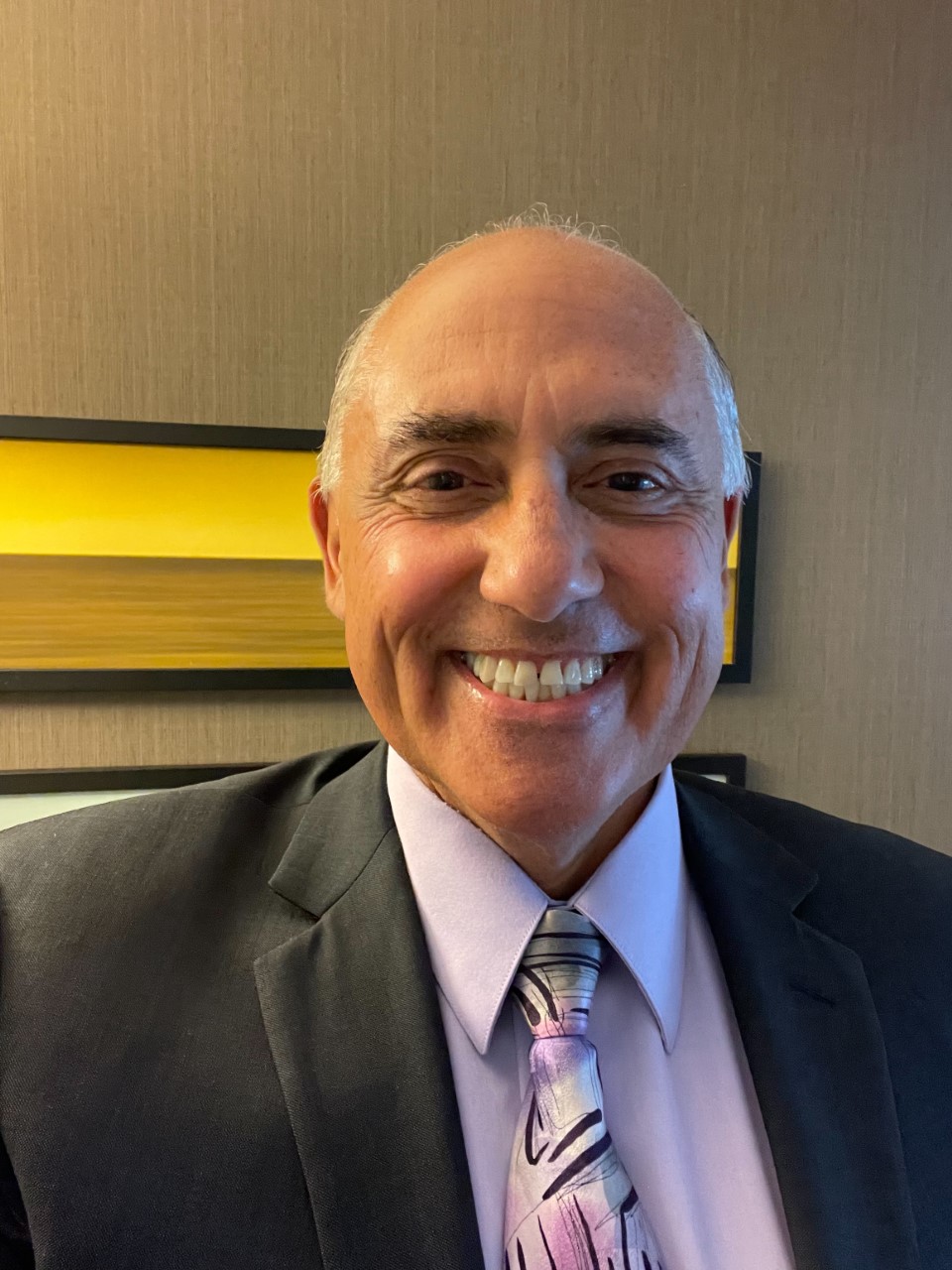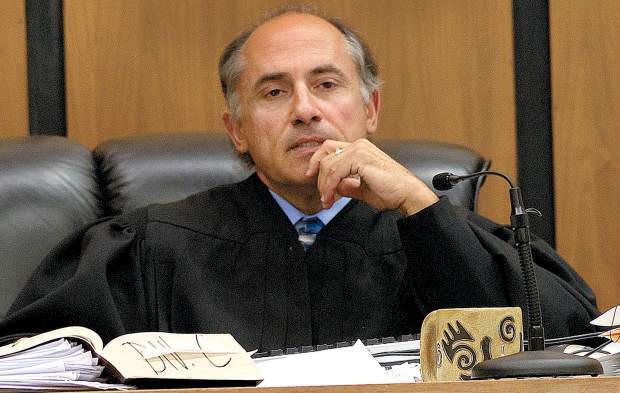How judges can mitigate vicarious trauma

Judge Victor Reyes.
In January 2011, I presided over a jury trial in which a 14-year-old child was sexually assaulted and brutally killed by a neighbor who left her body in a trash bag in a field. Daily, I was completely overwhelmed by what I was seeing and hearing and by the stressors of managing the proceedings.
During the trial, the prosecution asked that I review a photo that eventually would be introduced as evidence to the jury. During my 25 years as a public defender and on the bench, I had seen hundreds of grisly pictures in civil and criminal matters. Still, I was seriously triggered by the horrific picture of this deceased young girl who was the same age as my own children.
Internally, it was unbearable; externally, I had to be stoic and show no reaction during the bench conference on whether the photo was admissible. Considerations of fairness and procedural justice outweighed my natural human response. The irony of this moment was the decision I had to make as the judge: whether the photo from the scene was so disturbing that it would prejudice the 12 human beings in the jury box against the defendant.
My visceral reaction included clammy hands, shortness of breath and a stomachache. I apologized after the trial to my court reporter for quickly handing her the photo (face-up), so I could rush it out of my sight. The effects I suffered from seeing that picture outwardly manifested two days later when I sternly scolded the sheriff’s security detail assigned to the courtroom over something that was ultimately my responsibility.
A photo of me presiding over the trial is one I still use when training on the impact of trauma because it vividly captured the stress and turmoil going on inside. Regularly, I have to drive by the field where the child was found, and I always think of her. I feel a tightness in my body as I type these words 11 years later.
I share this story because most people think judicial officers should have complete control over their emotions, and they are somehow insulated from their exposure to traumatic events. While I attended lectures and trainings about vicarious trauma and how to mitigate its effects, I never fully integrated what I heard into my personal or professional life until later in my career. My “nothing phases me, I’ve seen it all” attitude was based on a lack of awareness of the gross and subtle effects of vicarious trauma.
Trauma is inherent to the work of the judicial system and vicarious trauma and stress are natural by-products. Vicarious trauma has been defined as the cumulative inner transformative effect of bearing witness to abuse, violence and trauma in the lives of people who we care about and are committed to helping. Although vicarious trauma can be a natural and normal occurrence for workers who provide care to others, failure to address the causes and symptoms can lead to negative outcomes in one’s life.
Effects of unaddressed vicarious trauma may include a negative world view, perceived threats to personal safety, loss of spirituality, or changes in self-identity, fear, empathetic distress/burnout, loss of relationships, mental or physical health issues, depression, or even coping with stress through food or substances. Political considerations may lead a judge to distrust openly sharing ideas and experiences of trauma and distrust that what is said will be understood; or he or she might simply want to numb their brain after dealing with court hearings all day.
 Judge Victor Reyes in court.
Judge Victor Reyes in court.
One method of mitigating the effects of trauma is developing resilience through a practice of wellness. Personal wellness means committing to a way of life. Wellness has to be embodied on a physical, mental, emotional and spiritual level. This is a slow, lifelong process from which the rewards are immeasurable.
My own health impact from vicarious trauma manifesting into stress eating was so devastating that my doctor’s diagnosis was either a massive heart attack or a stroke. Looking at a potentially shortened life span, I made the commitment to myself to become healthier. Only by recognizing my destructive behaviors and working on them would I be more available to my family and the community I swore to serve.
Since 2014, I have developed presentations and have led wellness workshops and sessions for the National Council of Juvenile and Family Court Judges and other organizations on techniques that enhanced my judicial well-being and lessen the effects of trauma. These are some of the many practical tools my experience and research indicate would help mitigate stress:
1. Maintaining a regular schedule of rest, relaxation, along with proper nutrition. There is plenty of information about food and drink that nourish—instead of depleting—the body. Drinking enough water daily has an impact on our mood, clarity of thought and balances bodily functions. Relaxation may include reading, soothing music, setting aside computers, television or the phone at least one hour before going to bed.
2. Mindfulness practices have been described as the “slowing down one’s mental processes enough to allow one to notice as much as possible about a given moment or situation, and then to act thoughtfully based on what one has noticed,” according to a 2016 Federal Judicial Center paper called “Mindfulness and Judging” by Judge Jeremy D. Fogel. The practice has been described as approaching each moment with an open awareness. Meditation practices with a focus on the breath to calm the body and minimize our “monkey mind” chatter can be helpful. Guided meditations with visualizations—especially of a place of sanctuary—breathing techniques designed to access the parasympathetic nerve system, and using the chair on the bench or in chambers to learn how to ground the body help stabilize attention and the bio-physiological processes. Yoga and other forms of movement also connect us deeper and require us to be present to reap their benefits.
3. Connection with others and the world around us allows us to be heard, which breaks the feeling of isolation and reminds of us our common humanity. Judges feel more supported by sharing their thoughts in a healthy, constructive way with family, friends and colleagues. Going outside of ourselves and connecting to nature through techniques such as forest bathing are being prescribed and recommended by doctors, therapists and insurance companies.
4. Developing self-compassion can only strengthen our compassion for others. Making a deep commitment to yourself is a mindset, especially when we are mired in self-critical thought and self-judgments. Through this practice, we celebrate when we are doing well, are grateful for our good qualities, recognize that change is constant and acknowledge that we are lifelong learners.
To encourage effective leadership, promote compassion and healthy decision-making, the NCJFCJ incorporates aspects of the above practices and other elements of wellness at its conferences and trainings. The NCJFCJ has created the Judicial Wellness Initiative, which provides information on breathing techniques, nutrition, physical exercise, mindfulness practices, self-compassion and advice from national experts on developing the tools needed to reduce stress and mitigate vicarious trauma. States are encouraging judicial officers to access their Employee Assistance Programs for confidential counseling sessions. Some states have even created specific wellness programs for judges and court employees.
A healthier and more self-compassionate judicial officer makes for a better decision-maker and community leader and should not be seen as weakness. To the contrary, it takes an incredible amount of honesty and self-awareness for anyone to admit the adverse impact of our work on our personal and professional lives so we can begin the process of accessing the tools available to develop resiliency. A judicial system with healthy, balanced professionals meeting the needs of those who are relying on the judiciary for help will result in more just and humane results for the community.
Judge Victor Reyes is the judge-in-residence for the National Council of Juvenile and Family Court Judges. He served as a judge from January 1999 through Dec. 31, 2014, in the 10th Judicial District located in Pueblo, Colorado. Reyes has facilitated international and nationwide training on issues related to mindfulness, domestic violence, the effects of vicarious trauma on judicial officers, judicial leadership and wellness. He currently leads yoga and meditation classes for incarcerated people in several facilities in Colorado.
ABAJournal.com is accepting queries for original, thoughtful, nonpromotional articles and commentary by unpaid contributors to run in the Your Voice section. Details and submission guidelines are posted at “Your Submissions, Your Voice.”
This column reflects the opinions of the author and not necessarily the views of the ABA Journal—or the American Bar Association.
Your Voice submissions

The ABA Journal wants to host and facilitate conversations among lawyers about their profession. We are now accepting thoughtful, non-promotional articles and commentary by unpaid contributors.

